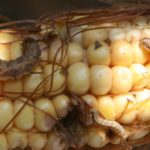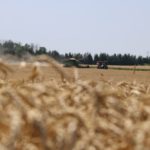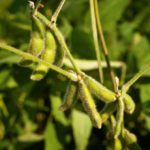Reading Time: 6 minutes Glacier FarmMedia – Sometimes the simplest solutions are the best ones. Breanne Tidemann, an Alberta-based researcher with Agriculture and Agri-Food Canada (AAFC), says boots on the ground remains one of the most effective strategies when it comes to weed control. “Don’t rely, especially in the spring, on the 80-kilometre-per-hour drive-by. Get out and get those […] Read more

Tips and strategies for pre- and post-harvest weed control
While in-field scouting tops the list, also consider post-spray followups, detailed record keeping, weed assessments, water quality and more

Guess who’s paying for new grain grading?
New CGC regulations would add DON and falling number to Canada’s grade specifications
Reading Time: 8 minutes A proposal by the Canadian Grain Commission (CGC) to add two grading factors to its list of parameters is stirring considerable debate, mostly among members of the western Canadian food value chain, but also in the east. The two factors revealed in a document published by the CGC late last year are falling number (FN) […] Read more

Simplifying data management
Now into its second year, FieldView is helping users learn more, and do more for themselves
Reading Time: 5 minutes Precision ag is such a patchwork today. It seems to offer the potential to achieve so many great things on the farm, yet it can create almost as much bother and anxiety for the grower, i.e. the very individual it was created to help. With the number of systems, designs and platforms that can collect […] Read more

Scouting, spray timing critical for western bean cutworm control
Reading Time: 3 minutes Conditions are right for a western bean cutworm year in Ontario corn and it’s time to scout — but likely not yet to spray. Western bean cutworm (WBC) is now the most economically damaging pest in Ontario corn. It feeds on the tassel and ears of corn and doesn’t particularly affect yield, but the feeding […] Read more

Ontario winter wheat crop yielding well, quality good
Reading Time: 2 minutes Ontario’s winter wheat crop is living up to its great expectations after a warm winter and lots of spring rain got it off to a great start. Farmers have been harvesting the crop for two weeks in the southwest of the province, but are just getting going in other areas. “I think the wheat’s looking […] Read more

VIDEO: Curbing clubroot in Ontario canola
Reading Time: < 1 minute During a recent canola growers’ day at Arthur, Ont., Dan Orchard, an agronomist with the Canola Council of Canada, brought his years of experience managing clubroot in Alberta to Ontario growers. Canola fields affected by clubroot were first found last year in Ontario. With some diligence, Orchard said, the problem should be able to be […] Read more

Minimal issues reported with dicamba drift in Ontario
Reading Time: 3 minutes UPDATED, July 21, 2017 — There appear to be few dicamba drift problems in Ontario, unlike in other soybean-growing areas in the U.S. The provincial environment and climate change ministry, the body to which spray drift problems are reported in the province, has heard of some anecdotal cases this year, but nothing significant, according to […] Read more

Shortage of Canadian supply drags on demand for sheep
Reading Time: 3 minutes The law of supply and demand may usually prevail, but it’s having a bit of trouble working in the Canadian sheep industry. “The No. 1 challenge we face is a shortage of supply,” said Miles Kliner, general manager of Sungold Specialty Meats in Innisfail. “That has been going on for 15 to 16 years. We […] Read more

Applying fungicide by air
If you choose an aerial applicator to apply your fungicide, be aware of timing and water volume
Reading Time: 3 minutes Dr. Tom Wolf, researcher and owner of Agrimetrix Research and Training, says aerial applicators are “tremendously important.” “They apply spray under conditions that a ground rig can’t — for example, with soil moisture. They cover much more area than a ground rig ever can so they can be more timely. ”Jill Lane, executive director of […] Read more

Where water leaves the farm
Improve your productivity by starting where water leaves your farm, and then work backwards
Reading Time: 4 minutes In the chase for higher yields and improved production, farmers have tapped into everything from precision ag systems to a return to cover crops. Now comes a concept that might not only boost yields and enhance soil health, it might also alleviate some of the pressure on farmers that starts with surface run-off heading into […] Read more


